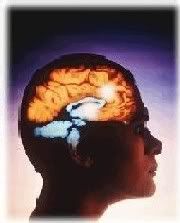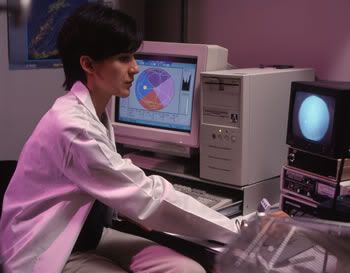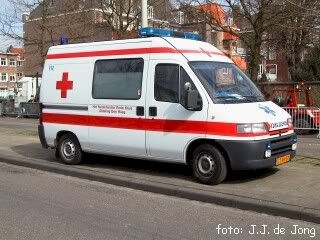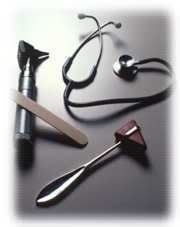Anesthetic Considerations for Magnetic Seizure Therapy: A Novel Therapy for Severe Depression.
In an effort to find safer and more effective alternatives to antidepressant drugs for treating severe depression, investigators have recently examined a variety of nonpharmacologic modalities (e.g., modified electroconvulsive therapy [ECT], repetitive transcranial magnetic stimulation [rTMS], and magnetic seizure therapy [MST]). Although ECT is highly effective, its use is limited by adverse cognitive sequelae (e.g., short-term memory loss) and frequent relapse (up to 80%) after discontinuation of the therapy. rTMS was introduced as an alternative to ECT, which was associated with less impairment of cognitive function because the brain is stimulated with magnetic fields that do not induce seizure activity. Unfortunately, investigators have found rTMS to be of limited efficacy in relieving depressive symptoms.
MST is a more potent form of magnetic stimulation than rTMS, using rapidly alternating magnetic fields to induce generalized seizures. Because magnetic fields pass through tissue without impedance, MST can stimulate more localized regions of the cerebral cortex than conventional ECT. It has been suggested that minimizing disturbances of the medial temporal regions of the brain would reduce cognitive side effects. Because MST uses higher intensity, more frequent, and longer durations of stimulation than rTMS, this larger dose of magnetic stimulation can produce generalized tonic-clonic seizures resembling ECT. Preliminary studies involving a small number of patients have suggested that MST possesses antidepressant efficacy with minimal cognitive side effects.
DISCUSSION
Depression is the world's most common mental health problem. Analogous to ECT, MST produced a significant antidepressant effect after a series of 10–12 treatments. However, MST was associated with a faster recovery of cognition than ECT after each treatment session. Kosel et al. initially described the successful use of MST to treat a woman with refractory major depression without any clinically significant cognitive side effects. MST treatments produce an increase in cerebral blood flow to the fronto-parietal and the basal ganglia, regions of the brain associated with depressive symptoms. Both MST and ECT induce motor and EEG seizures through electrical stimulation of the brain. However, the electrical field induced by MST is more localized, reducing spread to the medial temporal regions of the brain implicated in the cognitive side effects of ECT.
A preliminary study involving 10 patients suggested that MST might be associated with less severe muscle aches, fewer subjective memory complaints, and headaches than ECT. In this initial randomized comparison with ECT using methohexital anesthesia, MST-induced motor and EEG seizures were reported to be of shorter duration and lower-ictal EEG amplitude compared with ECT. Not surprisingly, the MST-treated patients performed better on tests measuring attention, retrograde amnesia, and category fluency than those receiving ECT. Because patients regain orientation more rapidly after MST (versus ECT), use of smaller doses of succinylcholine would be expected to reduce the uncomfortable symptoms associated with residual muscle paralysis upon return of consciousness.
Although anesthesia for ECT has recently been reviewed in the peer-reviewed anesthesia literature, the anesthetic considerations for MST have not been previously discussed. In the initial study at Columbia University, atropine 0.4 mg IV was given before the induction of anesthesia with methohexital 0.75 mg/kg IV. Succinylcholine 0.75 mg/kg IV was used for muscle relaxation. To prolong the duration of seizure activity in the current MST study, etomidate was used in place of methohexital to induce anesthesia. In contrast to the preliminary comparative study, use of etomidate was associated with similar durations of motor and EEG seizure activity for both MST and ECT treatments.
The rapid early recovery of orientation after MST required the use of the smallest effective dose of succinylcholine to avoid return of consciousness before full recovery from the residual muscle paralysis. As a result of the reduced dose of succinylcholine, there was a higher degree of electromyographic activity in the MST group, contributing to the higher prestimulus BIS values in the MST (versus ECT) group. This observation is consistent with previous reports in both volunteers and patients. The changes in BIS values during ECT treatments under etomidate anesthesia were similar to the pattern reported in an earlier ECT study using methohexital for anesthesia. Of note, the BIS values were significantly higher at 1 min and lower at 2 min poststimulus in the ECT (versus MST) group.
In contrast to the ECT group, post-ictal depression of the BIS value was not observed in the MST group. Given the similar seizure durations in the MST and ECT groups, these EEG-based data suggest that the amplitude of the induced seizure activity may have been reduced with MST (versus ECT), contributing to less post-ictal depression. It should be noted that the maximal magnetic stimulation was 1.3 times the magnetic seizure threshold for the MST treatments compared with 2.5 times the electrical stimulus threshold for the ECT treatments. The BIS values at 4 min after application of the stimuli were similar in both treatment groups, suggesting that recovery from etomidate anesthesia was similar in both groups. Consistent with our earlier ECT-BIS study, MST-treated patients were awake and oriented with a mean (± sd) BIS value of 72 (±20), significantly lower than their baseline BIS value.
Analogous to ECT, MST was associated with an acute hyperdynamic response after application of the magnetic stimulus. The magnitude of the acute hemodynamic response after application of the magnetic stimulus was greater than the hyperdynamic response after the electrical stimulus. However, the differences in the poststimulus MAP values were probably related to the use of smaller doses of the calcium-channel blocker nicardipine and the more rapid recovery of cognitive functioning in the MST (versus ECT) group. Future clinical studies with MST should attempt to identify optimal stimulation parameters, antihypertensive dosage requirements, and predictors of a favorable response to the treatment.
There are several important limitations to this preliminary analysis of the anesthetic requirements for MST (versus ECT). First, there was no prospective randomization of the patients to the MST and ECT treatment groups. Second, it was not possible to blind the anesthesiologist administering the drugs to the type of brain stimulation being applied. Therefore, the significant differences with respect to the medication requirements may reflect, in part, operator bias. Third, the magnitude of the electromyogram activity was not objectively quantified.
The failure to aggressively treat the acute hyperdynamic response to the MST stimulus is another deficiency of this analysis. Because the magnitude of the hemodynamic response to MST had not been previously described, we were less proactive in administering the calcium channel blocker to patients in this group. Given the differences in the amplitude of the magnetic-induced (versus electrical) seizure activity and posttreatment Ham-D scores, future studies with MST should use a higher magnetic output device (e.g., one capable of delivering outputs equal to 2.5 times the magnetic seizure threshold). Finally, more careful neurophysiological assessment of patient outcome with respect to depressive symptoms and cognitive functioning will be important in understanding the future role of MST for treating symptoms of severe depression.
In conclusion, anesthesia for MST requires modification in the standard technique used for ECT because of the patient's more rapid recovery of consciousness after the procedure. Further clinical studies are required to determine if MST will be a useful alternative to ECT for the treatment of severe depression.




5 Comments:
I know several other readers that will love this blog. Hey man you have a really insane blog here. Perhaps you will find my blog about Travel Yahoo interesting.
Hi! Good page neurology-healthcare.blogspot.com! Thank you!
hydrocodone
http://www11.asphost4free.com/tramadolrx/Tramadol.html tramadol tramadol
Hello! Nice site www.blogger.com! Thank you!
hydrocodone
cheap tramadol incest stories ivana fukalot
http://videosall.vidiac.com
http://ivanafukalot.forum-on.de
http://incest.forum-on.de
Hello all
Good site www.blogger.com, thanks.
Cheap drugstore online. Buy coumadin meridia propecia:
http://daniell.hostuju.cz/coumadin.html coumadin [url=http://daniell.hostuju.cz/coumadin.html]coumadin[/url] http://209384.hostuju.cz/asian-rape.html asian rape [url=http://209384.hostuju.cz/asian-rape.html]asi
an rape[/url] http://www.forumup.us/?mforum=beastiality beastiality [url=http://www.forumup.us/?mforum=beastiality]beastiality[/url] http://209384.hostuju.cz/cumshots.html cumshots [url=http://209384.hostuju.cz/cumshots.html]cumshots[/url] http://daniell.hostuju.cz/meridia.html meridia [url=http://daniell.hostuju.cz/meridia.html]meridia[/url] http://209384.hostuju.cz/mother-son-sex.html mother son sex [url=http://209384.hostuju.cz/mother-son-sex.html]mother son sex[/url]
Hello,
The fact is currently the medical establishment does not understand much about the brain. We, as a society, know very well how to cover up the problem with medications and insuring that the individual will not recover. To me the idea is bogus!
I have recovered from a Severe Traumatic Brain Injury and I know how to replicate the results with 100% effectiveness. No two brain injuries are the same but it is also true that no two fractures of a bone are the same either but we know how to heal a broken bone and I know how to recover (from first hand experience) from brain injuries. Ironically enough I’ve never broken a bone!
My name is Jerry and I was recently reprimanded at my job. I worked for a non profit organization in founded to help people with brain injuries, when they got word that I was telling people that it was very possible to recover from brain injuries I was approached by two corporate managers about how it was impossible to recover from brain injuries and they politely asked me to not speak of these “Lies”.
I complied until one of the corporate managers told me that it was the Brain Injury Association of this state that filed a formal complaint with the director of the company when they heard that I was saying I knew how to help people actually recover. At that point I became OUTRAGED! I understood that the hospitals might not endorse the “No Brainer Recover Method” but I was under the impression that the Brain Injury Association of any state would be in support of promoting the recovery of Neural Trauma.
I have worked with some of the top minds in the field and we all agree that we should still get some more knowledge and backing in order to allow “No Brainer Productions” to get to the place in must be to reach the people that need the educations. It will take at least $15,000 to get this ship off the ground so I would like to know HOW DOES IT FEEL TO BE A PART OF HISTORY? We are ready to invest the money on the 22 of July.
Any suggestion, referrals, ideas, or DONATIONS will be GREATLY appreciated!
Post a Comment
<< Home